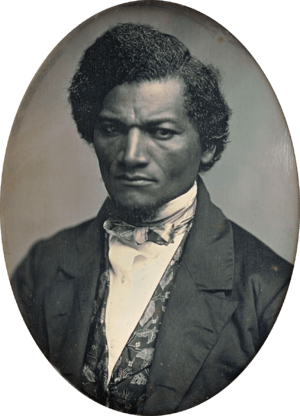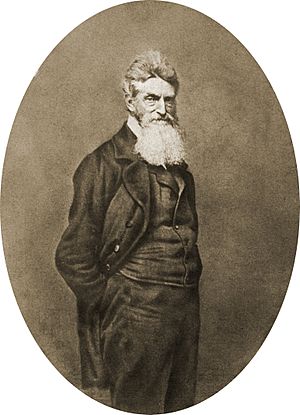Henry O. Wagoner facts for kids
Quick facts for kids
Henry O. Wagoner
|
|
|---|---|

Wagoner in 1897
|
|
| Born | February 27, 1816 |
| Died | January 27, 1901 (aged 84) Denver, Colorado, United States
|
| Occupation | Typesetter, miller, journalist, saloon keeper, grocer, sheriff |
| Political party | Republican |
Henry O. Wagoner (February 27, 1816 – January 27, 1901) was an important leader in the fight against slavery and for equal rights in the United States. He was born a free Black man in Maryland. In the 1830s, he secretly helped enslaved people escape to freedom through the Underground Railroad.
Wagoner moved to Illinois and later Chicago in 1838 to continue his anti-slavery work. He became a typesetter and journalist for newspapers that spoke out against slavery. During this time, he became close friends with Frederick Douglass, another famous abolitionist. When the American Civil War (1861–1865) began, Wagoner helped recruit Black soldiers to fight for the Union Army. After the war, he moved to Denver, Colorado. There, he continued to fight for the right to vote for Black people and for equal education and fair laws for everyone.
Contents
Henry Wagoner's Early Life and Activism
Henry O. Wagoner was born on February 27, 1816, in Hagerstown, Maryland. His grandmother taught him to read, but he only went to school for less than a year while working on a farm. Around 1835, Wagoner started helping enslaved people escape. He was part of the Underground Railroad and other groups working against slavery until it ended in 1865.
In 1838, he moved to Baltimore, where he kept helping the Underground Railroad. When people started to suspect his activities, he had to leave town. He traveled west, stopping in places like Wheeling, West Virginia, Cincinnati, and Dayton, Ohio. In Dayton, he taught at a school. He eventually settled in Galena, Illinois, where he learned to set type for a newspaper. In Galena, he also became friends with Elihu B. Washburne.
Moving to Chicago and New Work

In late 1843, Wagoner moved to Chatham, Ontario, Canada. This town was a major stop on the Underground Railroad. He worked at a newspaper there and taught primary school. On August 7, 1844, he married Susan.
In May 1846, Wagoner moved to Chicago. He worked as a typesetter for local newspapers. When Frederick Douglass started his newspaper, North Star, in 1846, Wagoner sometimes wrote for it. By 1852, Wagoner owned a successful business selling farm products and running a mill.
Fighting for Rights in Chicago
Wagoner became a key leader in the fight for civil rights in Chicago. He was active in local and national meetings for Black Americans. He also worked on civil rights issues. Around 1848, Wagoner and Frederick Douglass met in person and became good friends.
In 1852, Wagoner started a Literary and Debating Society at the Quinn African Methodist Episcopal Church. In 1853, he and another Chicago leader, John Jones, represented Chicago at a national meeting in New York. Wagoner's name was on an important document called The Claims of Our Common Cause. This document asked for equal rights for Black people in the United States.
Wagoner, Jones, and other Chicago activists openly spoke out against slavery. They also secretly helped people escape through the Underground Railroad. They strongly opposed the 1854 Kansas–Nebraska Act. This law allowed new states to decide if they would have slavery, which went against an older agreement. In 1856, Wagoner supported presidential candidate Gerrit Smith, who was against slavery.

In 1857, Wagoner met John Brown, a famous abolitionist. Wagoner and John Jones helped Brown and aided enslaved people escaping through Chicago to Canada. In 1859, Wagoner attended secret meetings with Brown and Douglass in Canada. Wagoner wanted to join Brown's mission, but a fire damaged his property. He felt he needed to rebuild and support his family first. Wagoner believed that America was his home, and he should work to make it better for everyone.
Henry Wagoner During the Civil War
In 1860, Wagoner traveled to Denver, Colorado, hoping to find gold. He moved with his brother-in-law, Barney Ford. The area they settled was later named "Ford Hill."
When the American Civil War began in 1861, Wagoner returned to Chicago. He worked for the Union Army. He helped recruit Black soldiers for the 29th United States Colored Infantry Regiment and the 5th Regiment Massachusetts Colored Volunteer Cavalry. Some of the soldiers he recruited were people he had helped escape slavery on the Underground Railroad. Wagoner also helped organize meetings in Chicago in 1864 to protest unfair laws against Black people.
Life in Denver

After the war, Wagoner moved back to Denver. He lived in the Five Points neighborhood. He became active in politics and worked hard for Black voting rights.
In 1866, Wagoner hosted Frederick Douglass, Jr. and Lewis Henry Douglass, two of Frederick Douglass' sons, in Denver. He taught them how to set type for printing. Around this time, Wagoner, along with William J. Hardin and Lewis Douglass, taught reading and writing to Black adults in Wagoner's home. This continued until Denver schools started to allow Black students in 1867 and fully integrated in 1873.
Wagoner also ran a restaurant and saloon. In 1870, he was considered one of the wealthiest Black people in Denver. In 1874, Frederick Douglass helped Wagoner's son, Henry O. Wagoner, Jr., get a job in Paris, France.
In 1876, Wagoner was appointed a clerk in Colorado's first state legislature. In 1880, he became a deputy sheriff in Arapahoe County, Colorado, working in the District Court. He served as sheriff for three years and also worked as an election judge.
In 1882, Wagoner briefly edited the Denver Star newspaper. As editor, he spoke out for civil rights. He argued against unfair Supreme Court decisions like the Civil Rights Cases in 1883 and Plessy v. Ferguson in 1896.
Family and Later Years
Wagoner's wife, Susan, passed away in 1870. They had eight children, seven daughters and one son. Only two of his daughters were still alive when he died. Henry O. Wagoner died on January 27, 1901, at his home in Denver.
|

